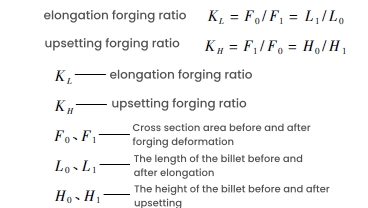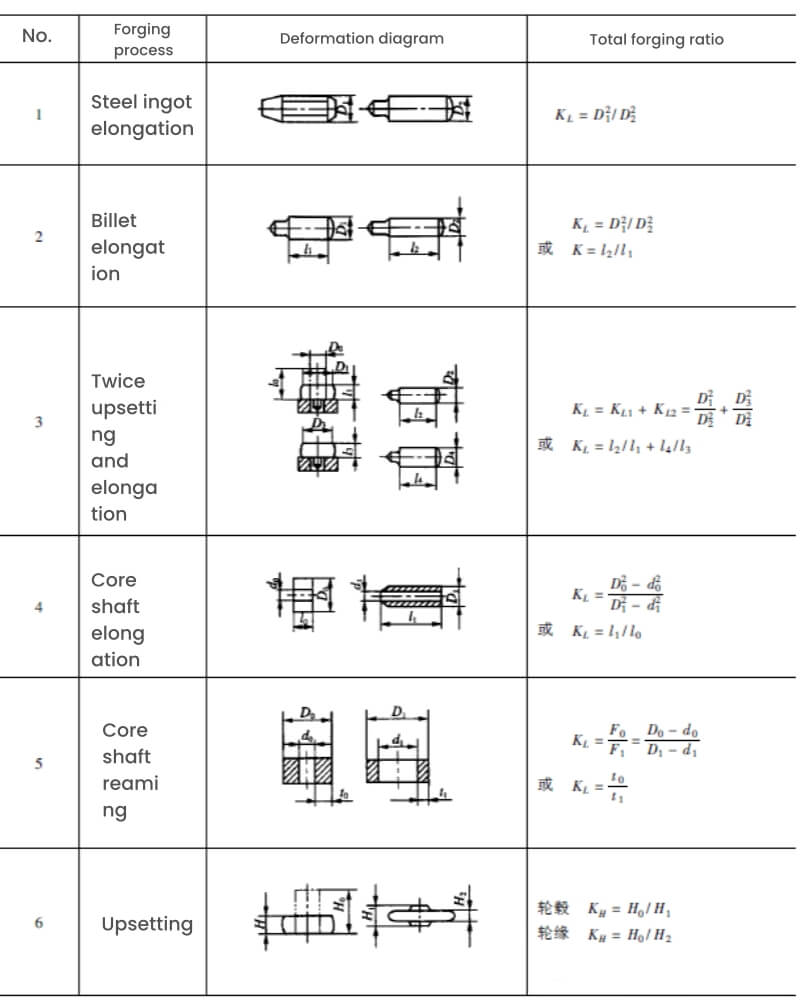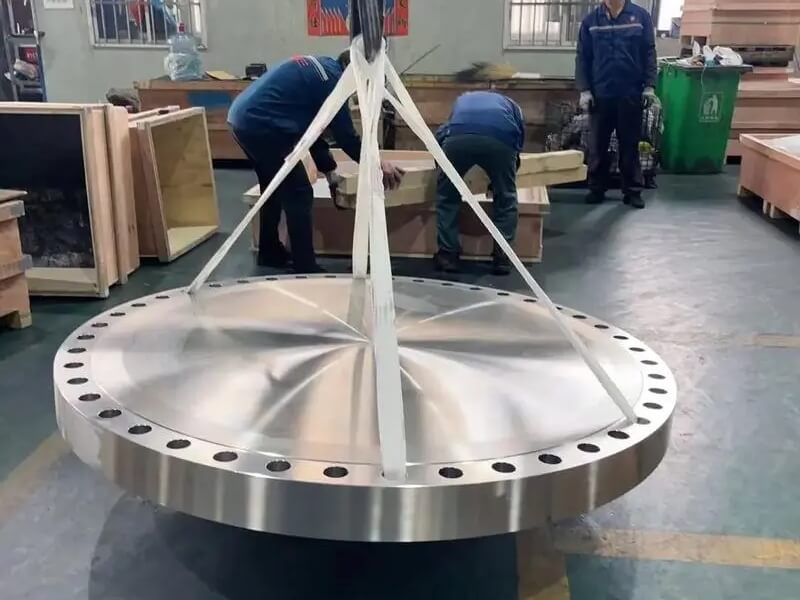Forging ratio is an indicator used to indicate the degree of metal deformation during the forging process, usually defined as the ratio of the cross-sectional area of the metal before and after forging.
The calculation method for forging ratio can be the elongation forging ratio or the upsetting forging ratio. The elongation forging ratio refers to the ratio of the cross-sectional area of the steel ingot or billet before elongation to the cross-sectional area after elongation. The upsetting forging ratio, also known as the upsetting ratio or compression ratio, refers to the ratio of the cross-sectional area of the steel ingot or billet after upsetting to the cross-sectional area before upsetting. The selection of forging ratio is crucial for ensuring the quality and performance of forgings, and factors such as different metal materials, forging performance requirements, process types, and the shape and size of forgings need to be considered. For example, alloy structural steel ingots typically require a larger forging ratio, while electroslag steel ingots have better quality and require a smaller forging ratio.
The size of the forging ratio directly affects the mechanical properties and forging quality of the metal. Increasing the forging ratio is beneficial for improving the structure and properties of the metal, but excessive forging ratios may also lead to unnecessary waste and increased workload. Therefore, while ensuring the quality of forgings, it is advisable to choose a smaller forging ratio as much as possible.
1. Basic definition of forging ratio
The ratio of the cross-sectional area of a metal billet before and after forging is called the forging ratio. It represents the magnitude of forging deformation, and the forging ratio can be calculated using the following formula:

2. Calculation methods of forging ratio

Note:
(1) The forging ratio of chamfered steel ingots is not included in the total forging ratio;
(2) When continuously elongating or upsetting, the total forging ratio is equal to the product of the sub forging ratios;
(3) When there is elongation between two upsets and when there is elongation between two upsets, the total forging ratio is equal to the sum of the two sub forging ratios, and it is required that each sub forging ratio is not less than 2.
About us:
Wuxi Changrun has provided high-quality tube sheets, nozzles, flanges, and customized forgings for heat exchangers, boilers, pressure vessels, etc. to many well-known petrochemical enterprises at home and abroad. Our customers include PetroChina, Sinopec, Chevron, Bayer, Shell, BASF, etc. Send your drawings to sales@wuxichangrun.com We will provide you with the best quotation and the highest quality products.
Our company has 27 international and domestic first-class brand drilling equipment that have been put into use, including 11 deep hole drills. We have advantages such as large processing specifications (maximum diameter of 8.6m), batch production, mature process plans, and standardized quality control. The processed tube sheet products are widely used in industries such as seawater desalination, heat exchangers, pressure vessels, paper machines, petroleum refining, steam turbines, and nuclear power.

